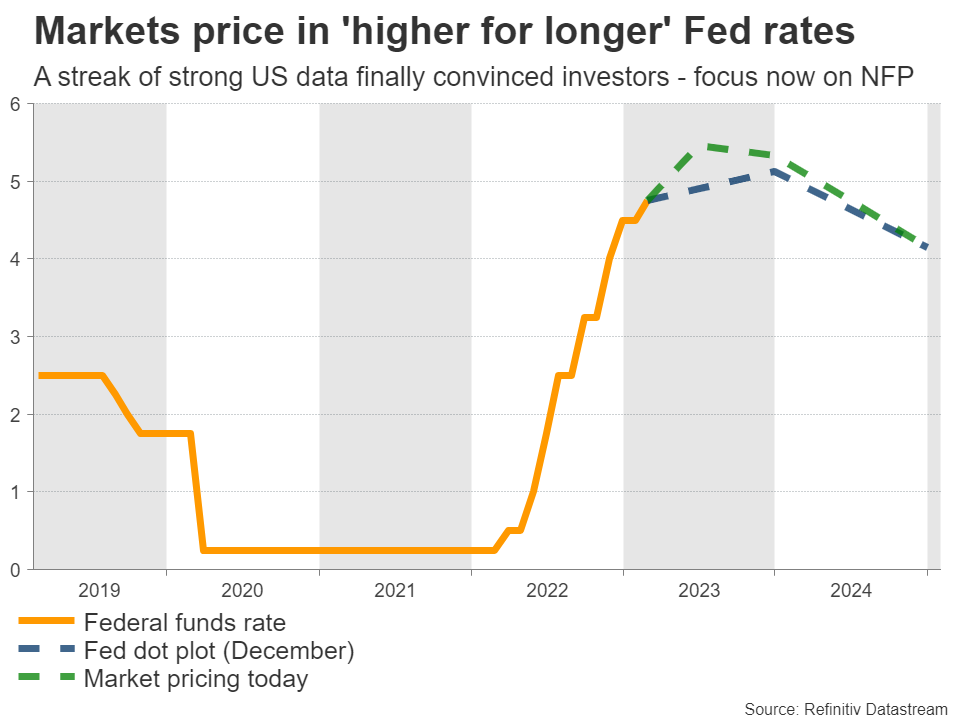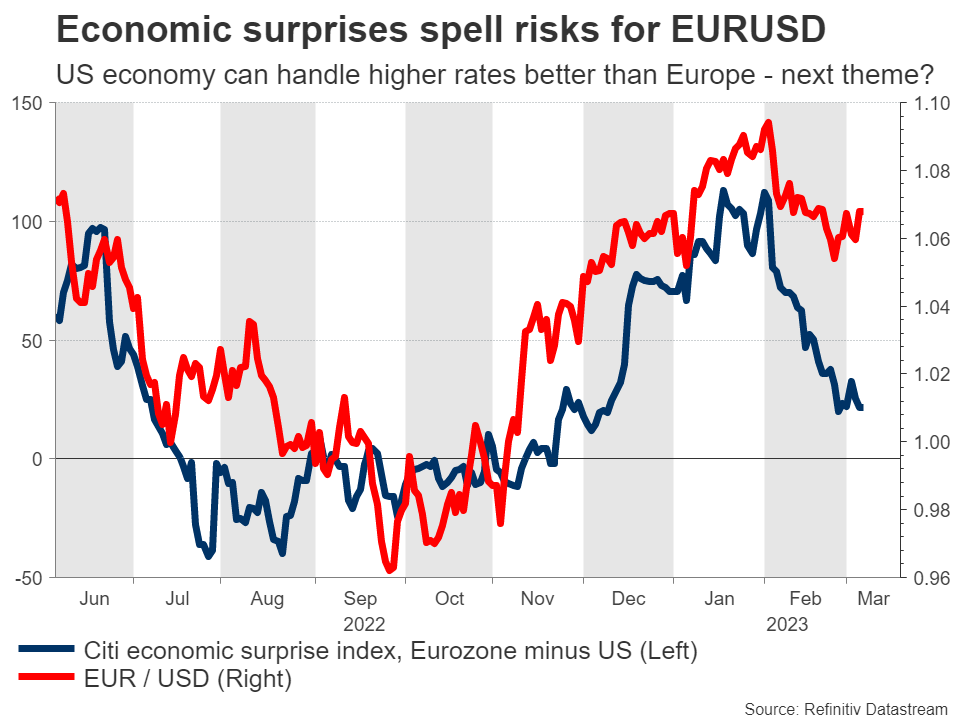Another high-stakes US employment report will be released on Friday. Most indicators point to another strong month for the labor market, although there’s a risk of some ‘payback’ following the sensational numbers last month. As for the dollar, the outlook seems positive in an environment of rising Fed bets, especially when considering the vulnerabilities in equity markets.
Economic resilience
The central theme in the markets this year has been the strength of the US economy. Incoming data continues to paint a picture of an economy that is firing on most cylinders, despite the Fed’s rapid-fire rate increases to tame inflation.
Consumer demand, inflationary pressures, and most importantly the labor market have not shown any real signs of damage yet. This economic resilience has caused a sharp repricing in the market, fueling bets that the Fed will push rates even higher and keep them elevated for a longer period to win the inflation battle.
Market pricing currently suggests the Fed will raise rates to around 5.4% by the summer and keep them there for the rest of the year. Hence, the upcoming data will be crucial in shaping these expectations, and by extension, driving the dollar.
Strong report or payback?
In February, nonfarm payrolls are forecast to have risen by 200k after an astonishing 517k print last month. The unemployment rate is expected to have remained unchanged at 3.4%, while wages are projected to have risen at a faster pace.
Early indicators suggest it was indeed a strong month for jobs. Business surveys from ISM and S&P Global pointed to stronger employment growth, while applications for unemployment benefits remained very low.
Nonetheless, there is a risk of disappointment. When a nonfarm payrolls print is as strong as it was last month, it is often followed by a softer number. Essentially, there is a correction back to the prevailing trend. Considering also that warmer weather and seasonal adjustments played a big role in boosting the last number, some ‘payback’ would be normal this time.
A minor disappointment could inflict some damage on the dollar, although the overall reaction will also depend on the wage numbers. Taking a technical look at euro/dollar, a potential move higher could encounter initial resistance near the 1.0740 zone, which also encapsulates the 50-day moving average.
On the flipside, a surprisingly strong report or a hot wage print could hammer the pair lower, with the first obstacle likely to be the 1.0530 region.
Dollar - Better times ahead?
In the bigger picture, the outlook for the dollar seems bright, even if there is a negative reaction on Friday. In short, America is in better shape than other major economies, which allows the Fed to raise rates higher and for longer than other central banks.
This outperformance is linked to the structure of the loan market. Since most US mortgages are on 30-year fixed rates, existing homeowners have not been directly affected by rising rates. Higher rates affect only the next homebuyer, so it takes some time before they significantly impact economic activity.
But in Europe, there is a much higher proportion of mortgages at variable rates. Those rates usually adjust on a yearly basis, which means European consumers will feel the heat of rising rates much earlier.
Therefore, any real economic weakness will likely show up in Europe first, presenting downside risks for pairs like euro/dollar or pound/dollar.
Similarly, these pairs have a strong correlation with the global investment mood, often rising and falling with stock markets. This is another vulnerability as equities seem overvalued at this stage, with corporate earnings contracting and interest rates rising.




